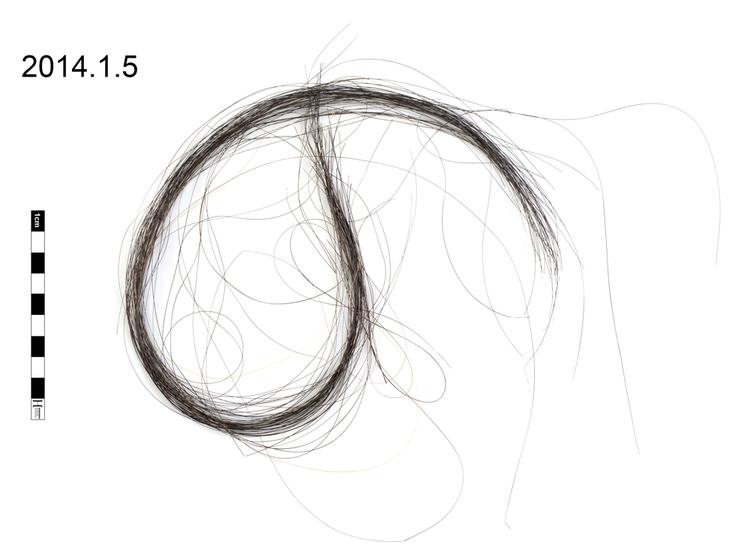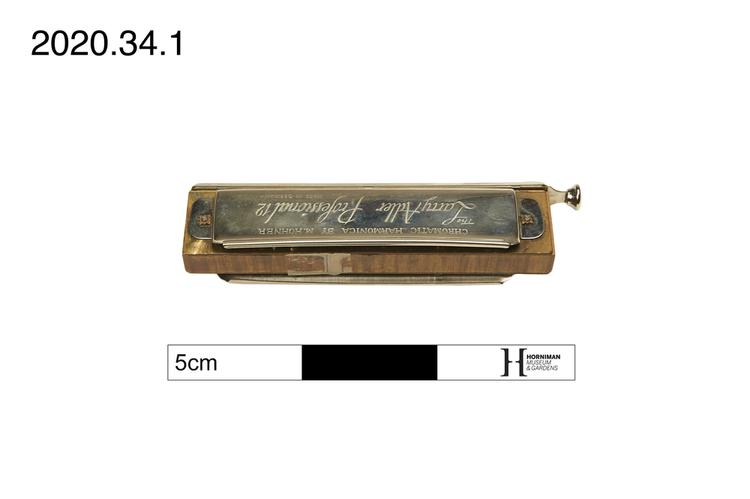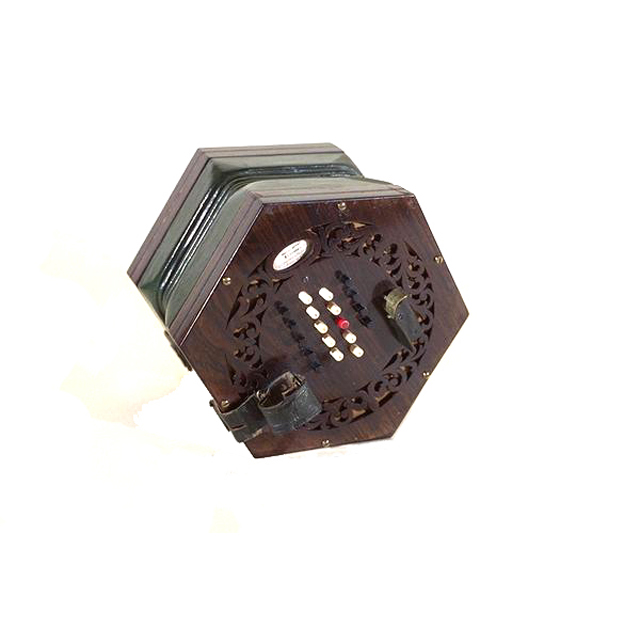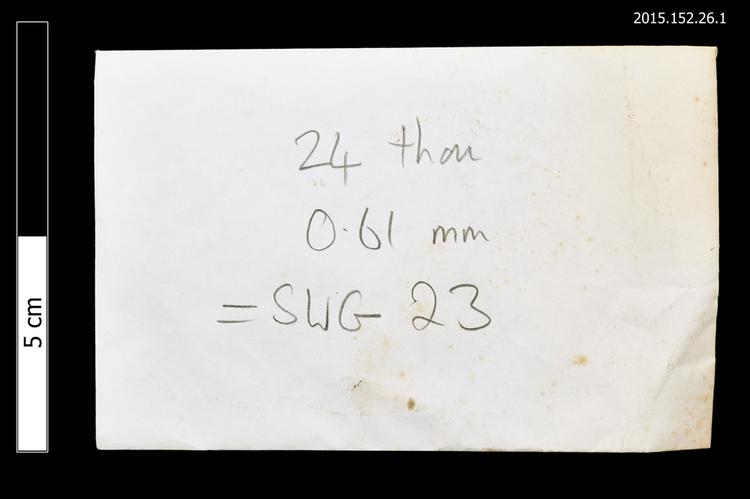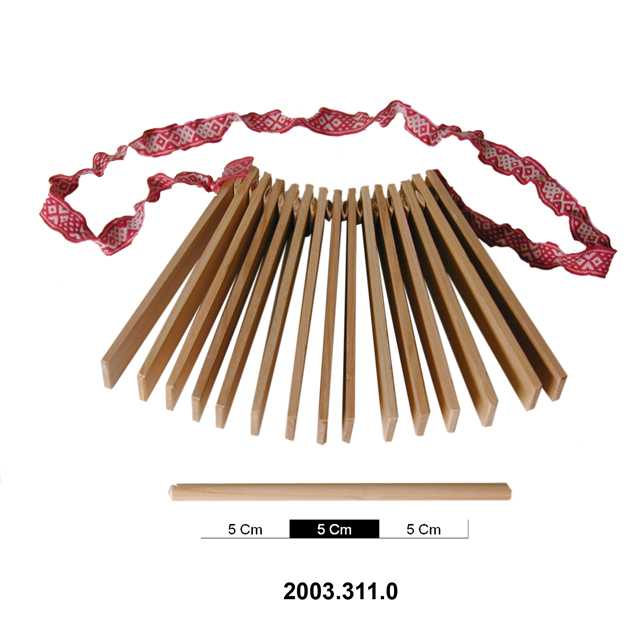

Kliashchotki, strung rattle. Fifteen rectangular strips of light coloured, unvarnished wood, each measuring 170 x 30 x 5.5 mm. The end edges of each strip are slightly chamfered. Two small, round holes are drilled into each strip near one end, and a cord attaches the strips together, passing in a loop through the two lines of holes. The strips are separated on the chord by fourteen small wooden spacers. These are approximately the same width as the strips and are elliptical in cross section, their end surfaces approximately 12 x 5 mm. The edges of the end surfaces are slightly chamfered with black colouration suggesting charring. A fabric ribbon is tied to the cord at each end of the row. It is red with a recurring diamond shaped pattern in white.
The klaishchotki is a strung rattle used in Belarusian folk music. The wooden strips are usually made from oak. The 'Dictionary of Belarusian Dialect' (Slovar' belorusskogo narechiia) by Ivan Nosovich, which was published in 1870, lists the instrument (pp.238-9), describing it as a child's toy used to create a continuous, unbroken noise. However, Inna Nazina, writing in 1979, describes a more subtle use for it in folk music, saying that the instrument is held between the two hands and manipulated in such a way that wide-ranging rhythms can be performed. (Nazina, I.D. 'Belorusskie narodnye muzykal'nye instrumenty' Minsk 1979 p.26) The klaishchotki is very similar in construction and performance technique to strung rattles from East Asia, the Chinese paiban and the Japanese sasara. M11-1991 is an example in the Horniman collection of the Japanese version.



